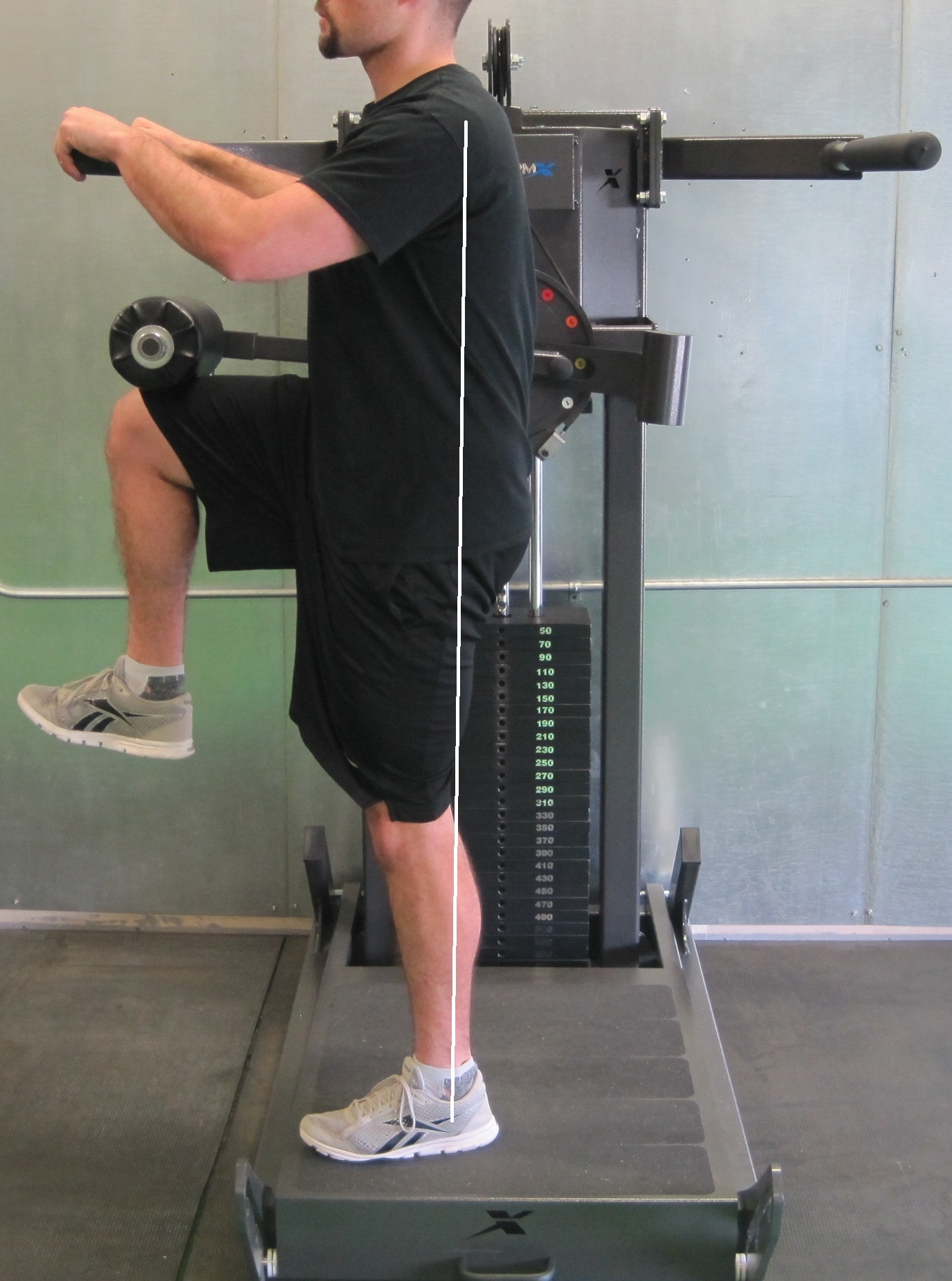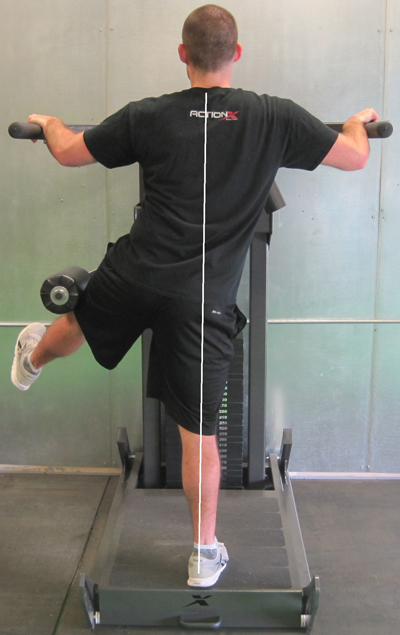Dec 20, 2016Utilizing the 4-Way Hip for Speed Development
By Dan Hutchison, MS, ATC, CSCS
The emphasis on hip musculature strengthening has always been a priority when the topic of linear or lateral speed development is discussed. Lately, various methods of hip strengthening have been discussed in the literature as alternatives to traditional practices, i.e., squats and deadlifts, to better meet the demands of particular speed movements or specific sports. In addition to traditional movements, emphasis has always been placed on the anterior and posterior components of the hip, while neglecting the medial and lateral aspects. Understandably, the majority of our force development comes from the quad (anterior) and glute (posterior) region. The supporting muscles of the hip complement the ‘driving force’ behind acceleration and top-end speed, and are directly related to maintaining technique and balance throughout the specific skill. The 4-way hip (4WH) machine, seldom seen in high school or collegiate weight rooms, has proven to be a valuable tool in hip musculature development, but has been severely under-utilized and under-estimated in the strength and conditioning environment.

 In comparison to its counterpart, the glute-ham machine, the 4WH allows loaded movement in all four muscular directions – flexion, extension, abduction, adduction – offering specific development in these areas. The key points of each movement are emphasized below:
In comparison to its counterpart, the glute-ham machine, the 4WH allows loaded movement in all four muscular directions – flexion, extension, abduction, adduction – offering specific development in these areas. The key points of each movement are emphasized below:
Hip Flexion: Muscles involved with driving the knee up.
- Improves drive-phase production of the non-contact limb during all athletic sprinting movements.
- A limiting factor in progressing to optimal linear speed development.
- Optimal muscular development for speed occurs with unilateral loading at 1 x Bodyweight (BW) for hip flexor strength. (Hint: A 180lb athlete should be able to rep 180lbs on each individual leg during the hip flexion exercise on the 4WH).
Hip Extension: Muscles involved with driving the knee back and into the ground.
- Enhances the push-off phase during ground contact in all athletic sprinting or change-or-direction movements.
- Adequately and specifically loads the bi-articulate (2-joint) glute and hamstring muscles in a functional (upright) position.
- Optimal muscular development for speed occurs with unilateral loading at 2 x BW for hip extension. (Hint: A 180lb athlete should be able to rep 360lbs on each individual leg during the hip extension exercise on the 4WH).
Hip Abduction: Muscles involved with raising the leg laterally.
- Stabilization of the pelvis during the stance phase of all athletic sprinting movements.
- Complements hip extension during acceleration and top-end speed.
- Enhances stability in the lateral aspects of the knee and ankle.
Hip Adduction: Muscles involved with bringing/keeping the leg toward the body’s midline.
- Stabilization of the pelvis during the stance phase of all athletic sprinting movements.
- Complements hip flexion during acceleration and top-end speed.
- Enhances stability in the medial aspects of the knee and ankle.
When individuals attempt to improve running velocities, the hip becomes a vital aspect in not only speed enhancement, but also injury prevention. As running speeds get higher, the motion becomes almost exclusively ‘hip-dominant’ while the individual is in an upright position. Many traditional weight lifting exercises are unable to load in this upright position which is another reason the 4WH is such a useful and complementary tool in the strength and conditioning landscape. The 4WH provides a more specific movement pattern that promotes a specific contraction force, allowing the individual to develop strength within the running skill. Successful strength characteristics can be properly developed using the 4WH along with traditional strengthening methods.
References::
1. Beardsley, C. and Contreras, B (2014). The increasing role of the hip extensor musculature with heavier compound lower-body movements and more explosive sports actions. Strength and Conditioning Journal 36(2): 49-55.
2. Deane, R.S, Chow, J.W., Tillman, M.D., and Fournier, K.A (2005). Effects of hip flexor training on sprint, shuttle run, and vertical jump performance. J Strength Cond Res 19(3): 615-621.
3. Delecluse, C (1997). Influence of Strength Training on Sprint Running Performance: Current Findings and Implications for Training. Sports Medicine 24(3): 147-220.
4. Young, W (2006). Transfer of strength and power training to sports performance. International Journal of Sports Physiology and Performance 1: 74-83.
5. Swanson, S.C. and Caldwell, G.E. (2000). An integrated biomechanical analysis of high speed incline and level treadmill running. Med. Sci. Sports Exerc. 32: 1146-1155.



